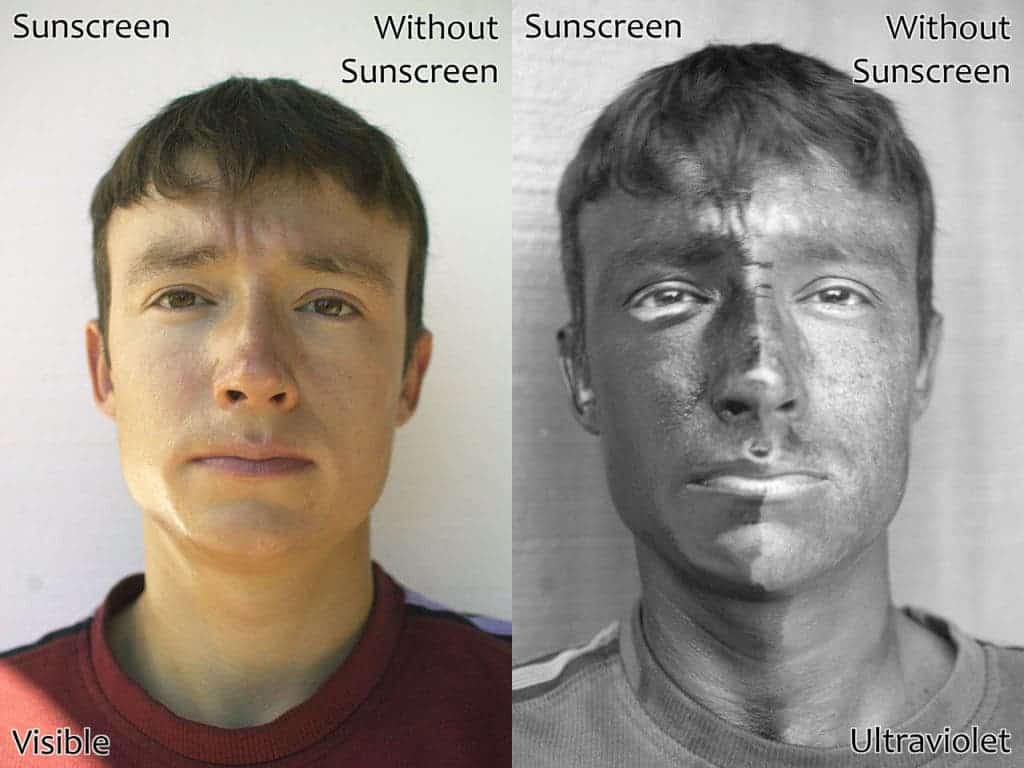A new compound promises to give you a nice sun tan without any radiation at all.

Getting a tan
When we’re exposed to ultraviolet (UV) rays, our body starts to trigger a series of chemical reactions which lead to the production of melanin. Melanin is a pigment that gives skin, hair, and eyes their color. The extra production darkens our skin, which protects us against the damaging effect of the sun’s rays. That’s right, a tan is your body’s way of protecting you against the Sun.
Now, researchers from the Massachusetts General Hospital have created a drug that tricks the body into developing a tan without any sunlight whatsoever. This is a markedly different effect to fake tan, which basically “paints” the skin without adding any melanin and any protection against UVs. It’s also very different to so-called tanning pills, which can increase your melanin production but still require exposure to UVs. This is the real deal — you rub it on your skin, and the body starts to produce melanin.
[ALSO SEE] What sunscreen SPF number means
“It has a potent darkening effect,” said Dr. David Fisher, one of the researchers involved in the project. “Under the microscope, it’s the real melanin, it really is activating the production of pigment in a UV-independent fashion.”
Fighting cancer

They’re also not doing this for a cosmetic reason — they have their eyes set on a much bigger problem: skin cancer. In 2015, there were 5.6 identified cases of skin cancer, many of which are associated with exposure to UV light. Tanning beds are also a growing problem. It is believed that tanning beds are the cause of hundreds of thousands of cases of cancer, with the World Health Organization placing tanning bed users at the highest risk of developing skin cancer. Of course, sunscreen helps, but people often misuse the sunscreen or don’t use appropriate protection. Also, sunscreen has the nasty habit of keeping your skin white, which is considered undesirable by many people who want to develop a tan.
“We know what causes skin cancer – it’s really associated with UV radiation – and yet it’s at the top of the list [of most common cancers], and it continues to increase in frequency,” says David Fisher, a dermatologist at Massachusetts General Hospital who led the research. “Sunscreen does prevent skin cancer. It has been shown. But it’s not enough. What I think could be done is to use sunscreen that has been supplemented by something to darken the skin.”
This discovery didn’t come out of the blue. Fisher has spent the past ten years figuring out how UV exposure triggers the production of melanin and previously gave mice a nice tan using a similar approach. But with human skin being five times thicker than that of mice, it took quite a while before they found something that seems to work.
In mice, Fisher and colleagues activate the pathway by inhibiting a type of enzymes, called salt-inducible kinases (SIK). But the inhibitors couldn’t penetrate human skin, so they needed to find a workaround. Working with chemist Nathaniel Gray, they found another type of SIK inhibitors which does the same job. The response of the skin completely mimicked that of a natural tan, without any visible side effects.
“We’ve got several compounds that we can apply right onto human skin that was kept alive artificially in a petri dish,” Fisher says. “We could see that the skin starts to turn dark.”
This could save millions and millions of lives, especially with skin cancer rates going through the roof around the world. Matthew Gass, from the British Association of Dermatologists, praised the study, saying that it was a “novel approach.”
The team is also looking into ways this could help people with autoimmune diseases such as vitiligo, or how it could be applied to redheads, who don’t really tan — they just get burns when exposed to the sun because their skin doesn’t produce the extra melanin.
“Assuming there are no safety concerns, it is clearly a better option than UV exposure,” says Jerod Stapleton, a behavioral scientist at the Rutgers Cancer Institute of New Jersey in New Brunswick who studies indoor tanning and was not involved in the work. “We are talking about millions of young people potentially not using tanning beds each year. … It could be a game-changer for skin cancer prevention.”
Before we get overly excited about this, it’s important to note that it hasn’t been tested on humans yet — only on mice and patches of human skin leftover from surgeries. Fisher says it will still be three to five years before they move on to clinical trials.
Journal Reference: Nisma Mujahid et al — A UV-Independent Topical Small-Molecule Approach for Melanin Production in Human Skin. DOI: http://dx.doi.org/10.1016/j.celrep.2017.05.042


